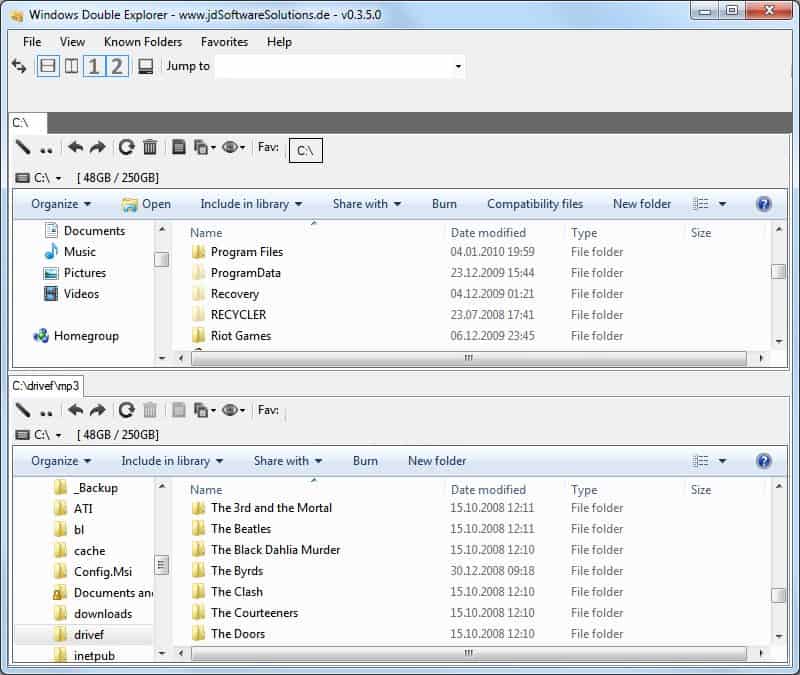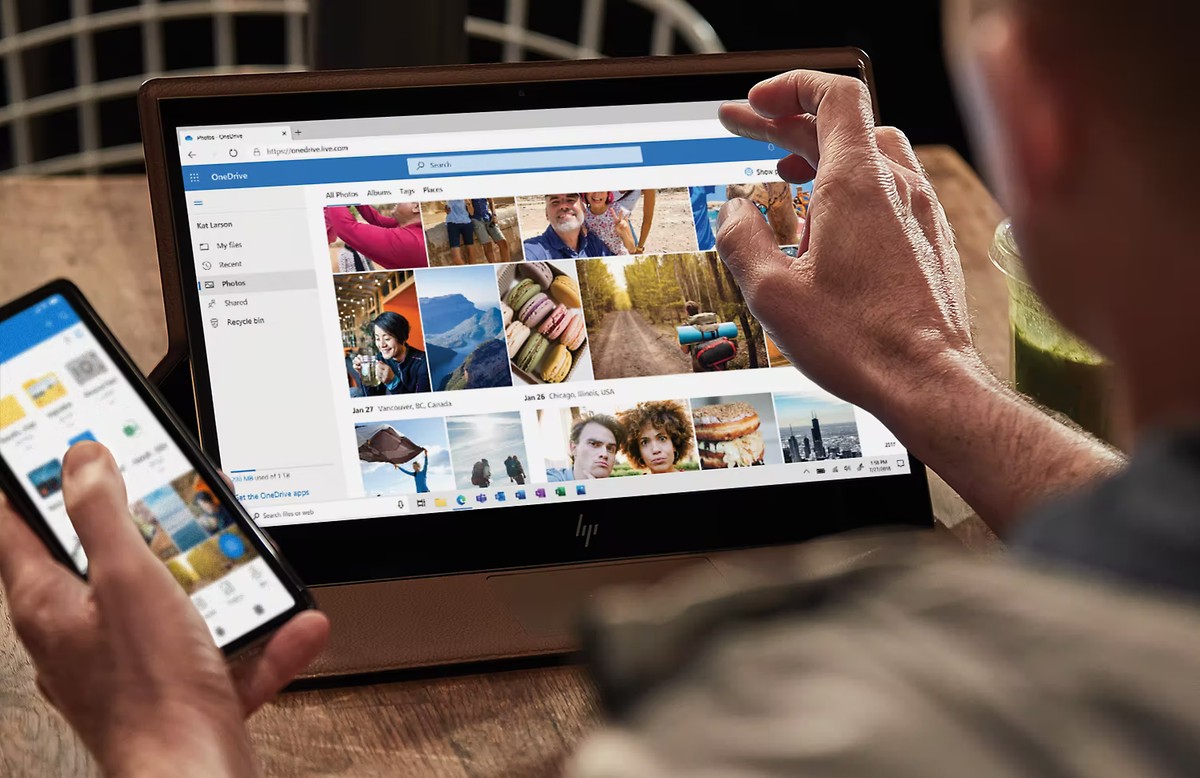Windows Double Explorer

Windows Explorer is the default file browser of the Windows operating system that has been renamed to File Explorer in Windows 8 and newer versions.
Microsoft has improved Windows Explorer with every release of Windows but there are still some things that are not very practical in Windows Explorer, including copying or moving files and folders from one location to another, or comparing folders.
Most Windows users help themselves by either opening two Windows Explorer windows next to each other for file operations, or use third party software that displays two locations out of the box.
Windows Double Explorer is such an application. It is not as sophisticated as Total Commander or comparable clones but it offers the basic features needed to work with files and folders more comfortably.
Windows Double Explorer
Windows Double Explorer displays two horizontally aligned Windows Explorer windows in its interface with the possibility to switch to a single explorer window or a vertically aligned interface if necessary or preferred.
The window displays the folder structure on the left sidebar and the actual files and folders of the selected location in the right. Files and folders can be moved and copied between the two Windows Explorer instances that are displayed in the interface making these operations a lot easier as you can use simple drag and drop operations for that when using the program.
Windows Double Explorer displays a favorite toolbar by default which can be used to place often used folders in it. Favorites can also be placed next to the Fav: item in each explorer window. New favorites are added by dragging and dropping folders to those locations, and a right-click and the selection of clear from the menu removes them again.
The only other option provided by Windows Double Explorer is a listing of known folders that is accessible on the menu bar. This lists dozens of system folders like MyDocuments, libraries or cache that can be accessed that way. The sheer amount of links makes the listing somewhat messy though.
Windows Double Explorer lacks additional functionality limiting its use to file operations. It is offered on the other hand as a portable version and installer although it does require the Microsoft .net Framework to run and is only compatible with Windows 7 and newer Windows versions.
Update: The program has not been updated since 2010 and while that means no new features or fixes in the last six years, it works considerably well on newer versions of Windows.
It may be a better idea to use a free Explorer alternative such as Free Commander or Multi Commander that is still in development.


























from site for Q-dir:
Q-Dir 4.19 (364 KB) de / en
> Servers 2000/2003/2005 Win 98/XP/Vista and Windows-7 x64/x86
my selection of choice is Q-dir.
Excellent German software engineering too.
Light and fast, portable and free.
P.S. Forgot to mention: up to four — ‘4’ — windows to work with at the same time.
The best file manager in my opion is Total Commander http://www.ghisler.com/
All the features that I could think of as being useful… well, TC has them and many more.
This app’s homepage says it requires Windows 7. I didn’t dl it to check out if it’s thusly limited because I am happy with the doujble pane file manager I use, Free Commander,
http://www.freecommander.com/
Free Commander does include extensive file management services and it’s portable.